When Is the Best Time to Publish a Blog (+ How to Test It)

Finding the right publishing time could help you attract more visitors, get more comments, social shares, and backlinks. It can also help you see when your audience is most active, and increase your chances of going viral.
In this article, we’ll share what is the best time to publish a blog post, and how you can test it for your website.

The Best Time to Publish Blog Posts
If you’ve just started a new blog, then you are probably looking for ways to attract more people to read your content.
While there are many ways to increase your blog traffic, you might be wondering, can publishing content at a specific time and date can help you get more visitors?
Over the years, many studies have been done to find the perfect time to publish a blog post. For instance, one study found that 70% of people read blogs in the morning, and that the average best time to publish blog posts for maximum traffic is Monday around 11 am EST.
However, another study that analyzed millions of blog posts found that there’s no difference in the number of shares or traffic on different days of the week.
After analyzing all the different studies, we found the key takeaway is that the best time to publish blog posts is different for every website.
One blog might get the most traffic by publishing on Mondays at 11 am, while another might get more views by publishing on Saturday nights.
It all depends on your audience.
You cannot pick a single day of the week to publish all your content and hope to get more engagement based on a study. That’s because most of the studies provide a generalized view across multiple industries.
It’s better to do your own testing and find out what time and day works the best for your website. You can test different days and times to see when you get the most traffic, social shares, and comments.
The good news is that it’s quite easy to test publishing times in WordPress.
Let’s take a look how you can find the best publishing time for your blog posts in WordPress.
How to Test Best Publishing Time in WordPress
The easiest way to uncover the best time to publish blog posts in WordPress is by using MonsterInsights.
It’s the best Google Analytics plugin for WordPress, and over 3 million businesses use it, including Microsoft, Bloomberg, PlayStation, and Subway.
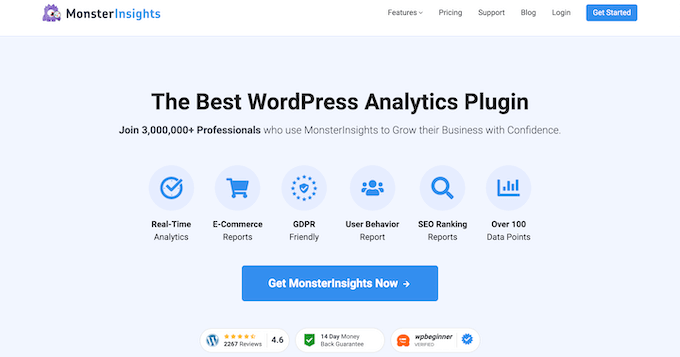

Using MonsterInsights, you can test the best publication time through their custom dimensions feature which tracks realtime visitors data.
Let’s look at both ways you can test the best time to publish blog posts.
1. Setting Up Publication Time Analytics
By default, Google Analytics does not track your blog post publication times. However, you can use MonsterInsights to add this tracking by using a custom dimension.
Custom dimensions help track additional data like popular authors, popular post type, and best publication time in Google Analytics.
The best part about using MonsterInsights is that you don’t have to touch a single line of code to add custom dimension tracking on your website.
Note: You’ll need the MonsterInsights Pro version because it includes the Custom Dimensions addon. Plus, you also get other advanced tracking features and dashboard reports including realtime reports.
First, you’ll need to install and activate the MonsterInsights plugin. If you need help, then please see our guide on how to install a WordPress plugin.
Upon activation, you’ll be taken to Insights from your WordPress dashboard, and you’ll see the welcome screen for MonsterInsights. Go ahead and click the ‘Launch the Wizard’ button to add Google Analytics to your site.
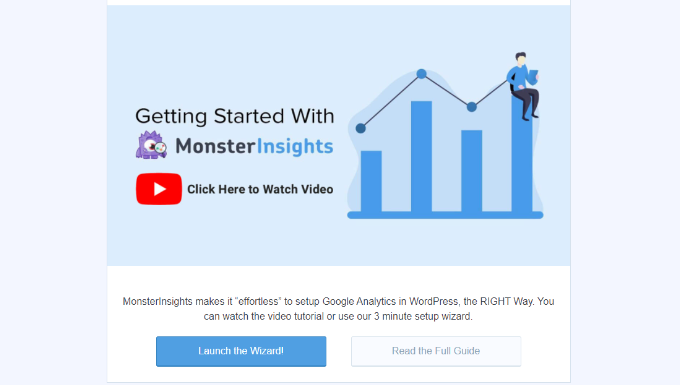

For more details, please see our guide on how to install Google Analytics to a WordPress website.
Next, you can head over to Insights » Addons from your WordPress dashboard and then scroll down to the ‘Dimensions’ addon. After that, click the ‘Install’ button, and the addon will automatically activate.
You’ll see the Status change from ‘Not Installed’ to ‘Active.’
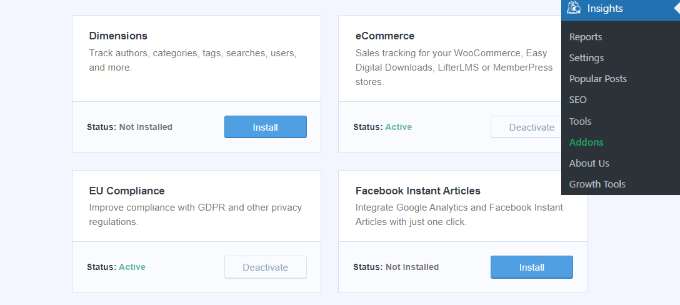

Once the addon is active, you can go to Insights » Settings.
Then, navigate to the ‘Conversions’ tab.
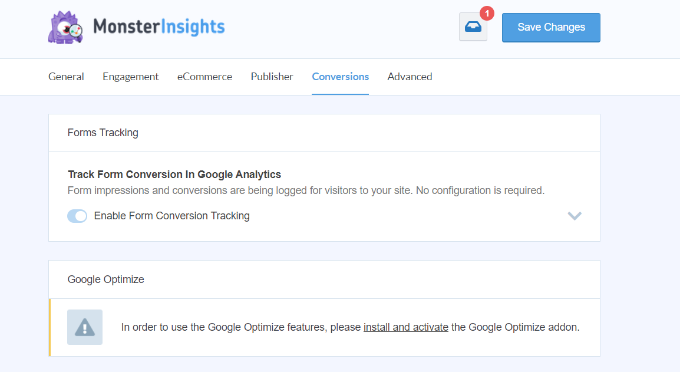

Next, scroll down to the ‘Custom Dimensions’ section.
Here you’ll need to click the ‘Add New Custom Dimension’ button to get started adding the publication time tracking.
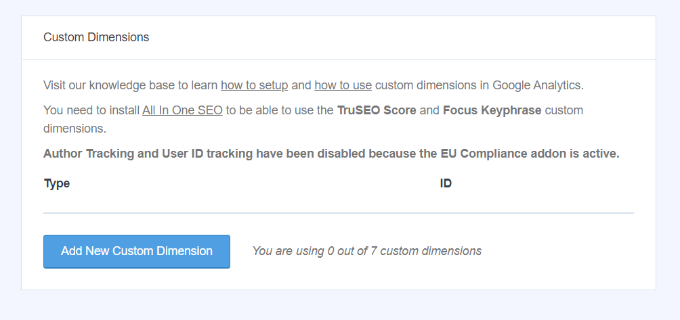

After that, simply select the ‘Published at’ dimension from the dropdown menu.
Don’t forget to save your changes when you’re done.
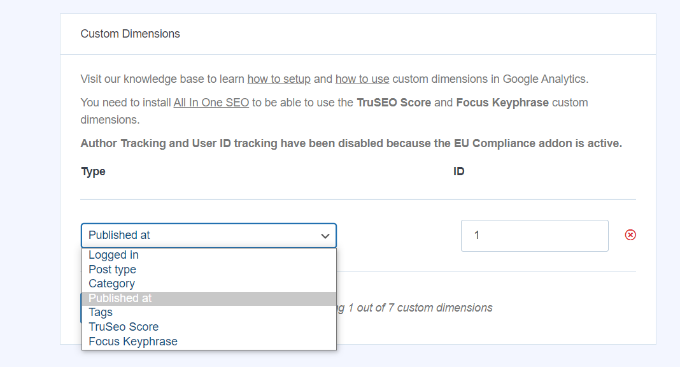

You’ll now need to add to custom dimensions in Google Analytics.
We’ll show you how to create dimensions in the older versions of Google Analytics (called Universal Analytics) and the new Google Analytics 4 version.
Add Custom Dimensions in Universal Analytics
First, you’ll need to visit the Google Analytics website and login to your account. Simply choose your website property from the menu at the top.
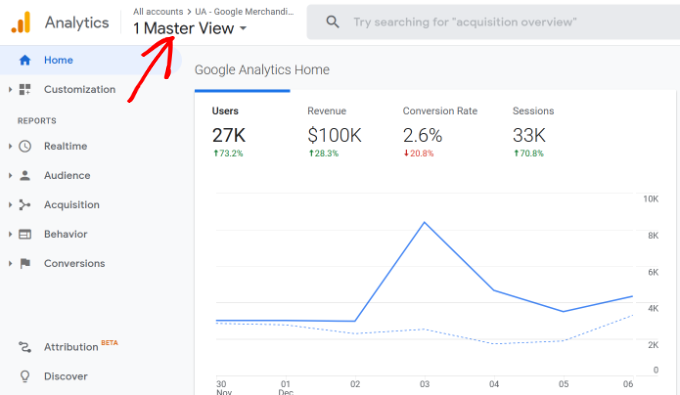

After that, navigate to the Admin page.
Then click the ‘Create Definitions’ and ‘Custom Dimensions’ options under the Property column.
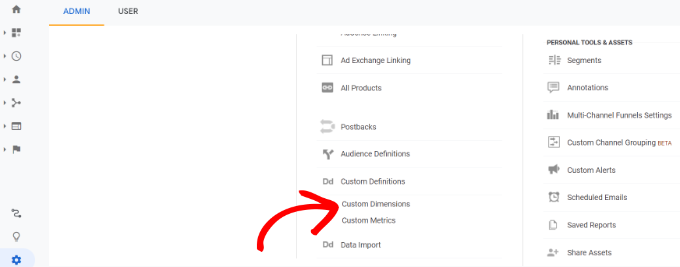

Next, you can click the ‘+ New Custom Dimension’ button.
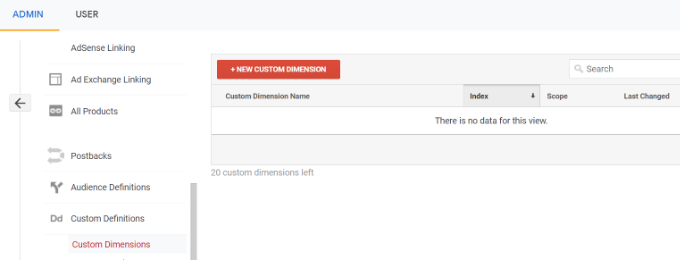

Enter a name for your custom dimension on the next screen.
Then click the ‘Create’ button.
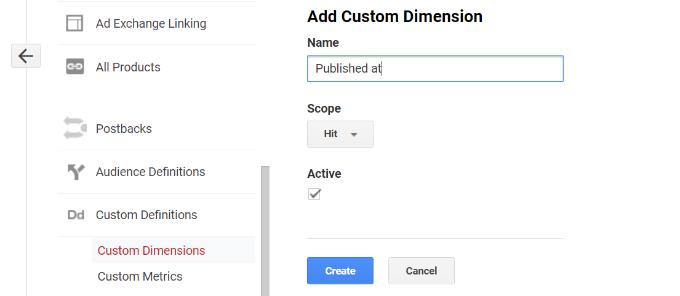

You’ll now see codes for your custom dimensions.
Simply click the ‘Done’ button at the bottom.
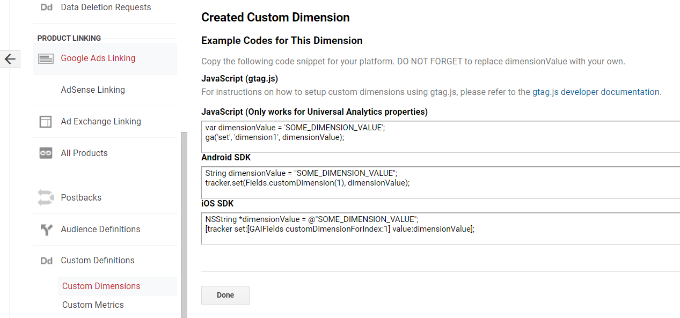

Your custom dimension will now be created in Google Analytics.
Just make sure that the Index number in Google Analytics matches the custom dimensions ID in MonsterInsights. If this is the first custom dimension you’re setting up, they will both automatically be ‘1’, so there’s no need to adjust it.


Add Custom Dimensions in Google Analytics 4
To set up custom dimensions in Google Analytics 4 version, go ahead and login to your account.
After that, you’ll need to go to Configure from the menu on your left.
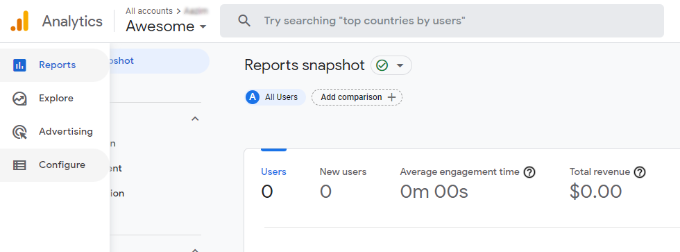

Next, head over to the ‘Custom definitions’ option from the left menu and then click the ‘Create custom definition’ button.


Now, you’ll need to enter details about your new custom dimension. Simply enter a name for the dimension and add a description for your own reference. We’ll call the new custom dimension ‘Best Publication Time’.
When selecting the Scope, go ahead and choose ‘Event’ from the dropdown menu. Lastly, enter an event parameter that you want the dimension to use and show in the reports, like ‘publication_time’.
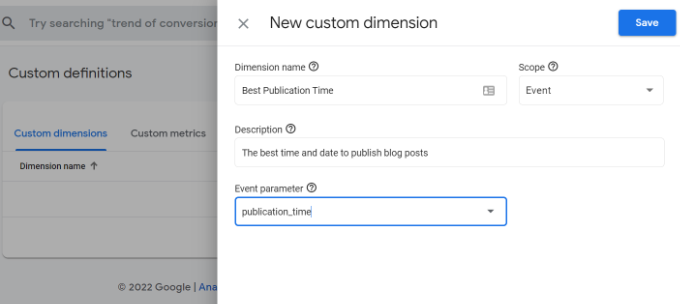

After entering these details, don’t forget to click the ‘Save’ button when you’re done.
You’ve successfully created a custom dimension in Google Analytics to record the best publication time on your website.
Now you can go ahead and view the best publication times on your site and see when you get the most traffic.
With MonsterInsights, you can view the Dimensions report inside your WordPress dashboard. Simply head over to Insights » Reports from your WordPress dashboard and then go to the ‘Dimensions’ report.
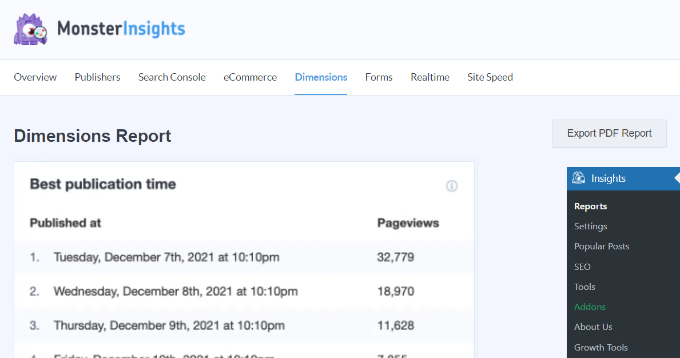

Using the data from the stats dashboard, you can see the pageviews at different dates and times. Go ahead and schedule your blog posts at the best publication time and boost your blog traffic.
2. Monitor Realtime Visitors for Best Publishing Time
You can also view the Realtime report in MonsterInsights to see how many visitors you get immediately after publishing and promoting a blog post.
Simply go to Insights » Reports and then navigate to the ‘Realtime’ report to view the report.
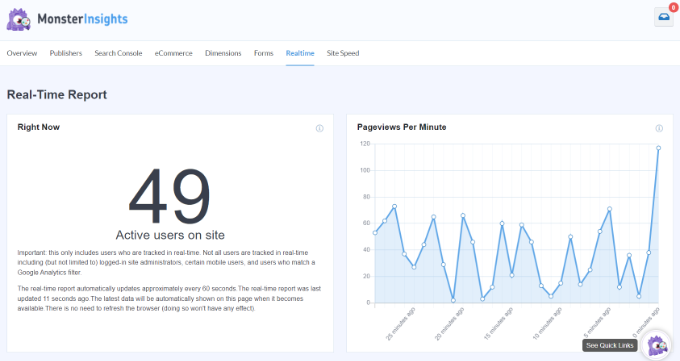

Next, you can monitor the report after you publish a post and share it with your readers. This will help you uncover the best time to publish a blog post.
Publishing your blog posts at the right time isn’t the only way to boost your traffic. If your blog posts are properly optimized for search engines, then they’ll continue to get more traffic over time, long after they’re published. Over time, this will get you more traffic than publishing on a certain day or time.
To get started optimizing your website to get more search traffic over time, see our ultimate guide on WordPress SEO.
Another proven way to get more traffic to your new blog posts is by using push notifications. It’s a top 10 traffic source on Vistanaij. Here’s how to add push notifications in WordPress.
We hope that this article helped you learn about what is the best time to publish a blog and how to test it. Next, you can see our guide on how to choose the best WordPress hosting, or see our expert pick of the best email marketing services.
If you liked this article, then please subscribe to our YouTube Channel for WordPress video tutorials. You can also find us on Twitter and Facebook.










